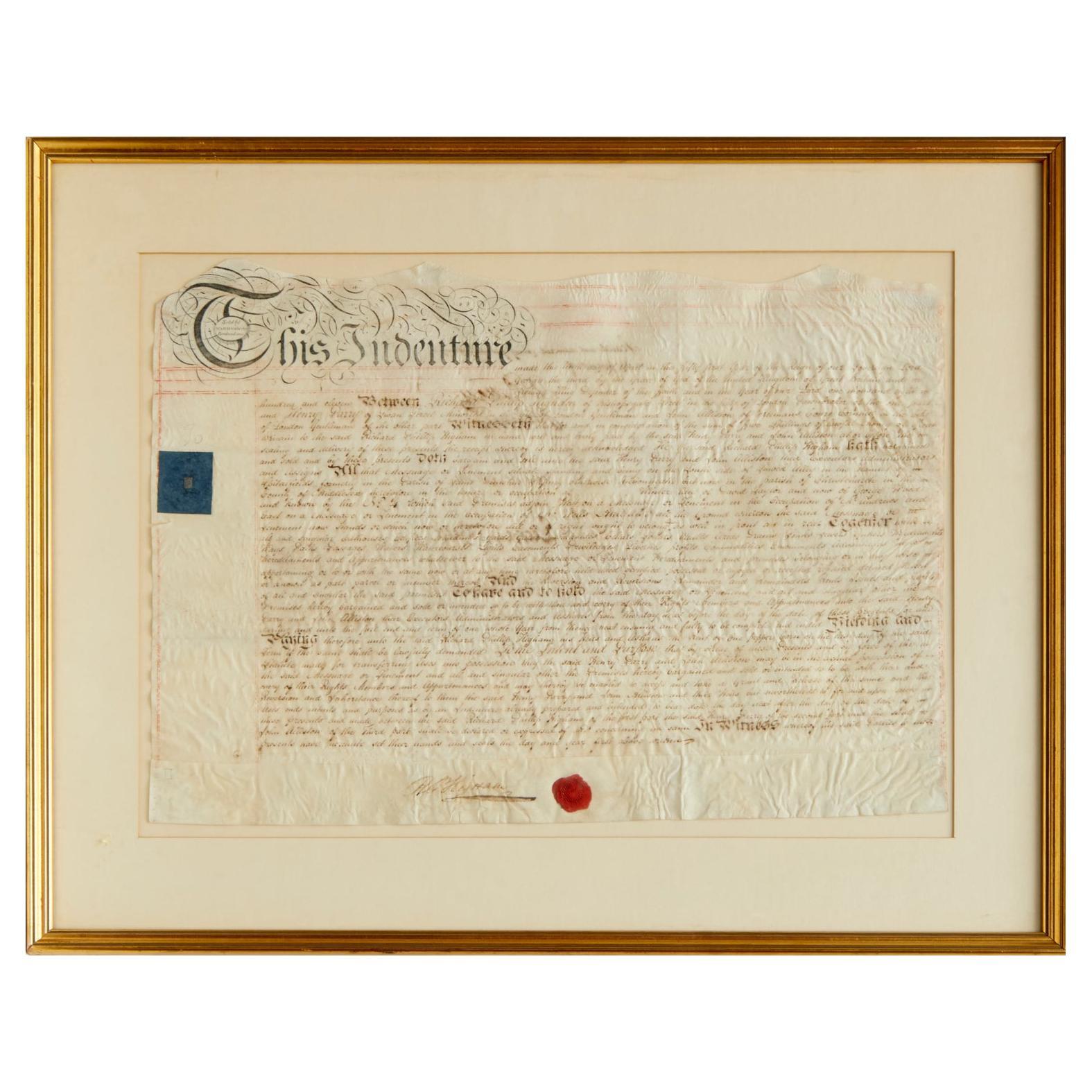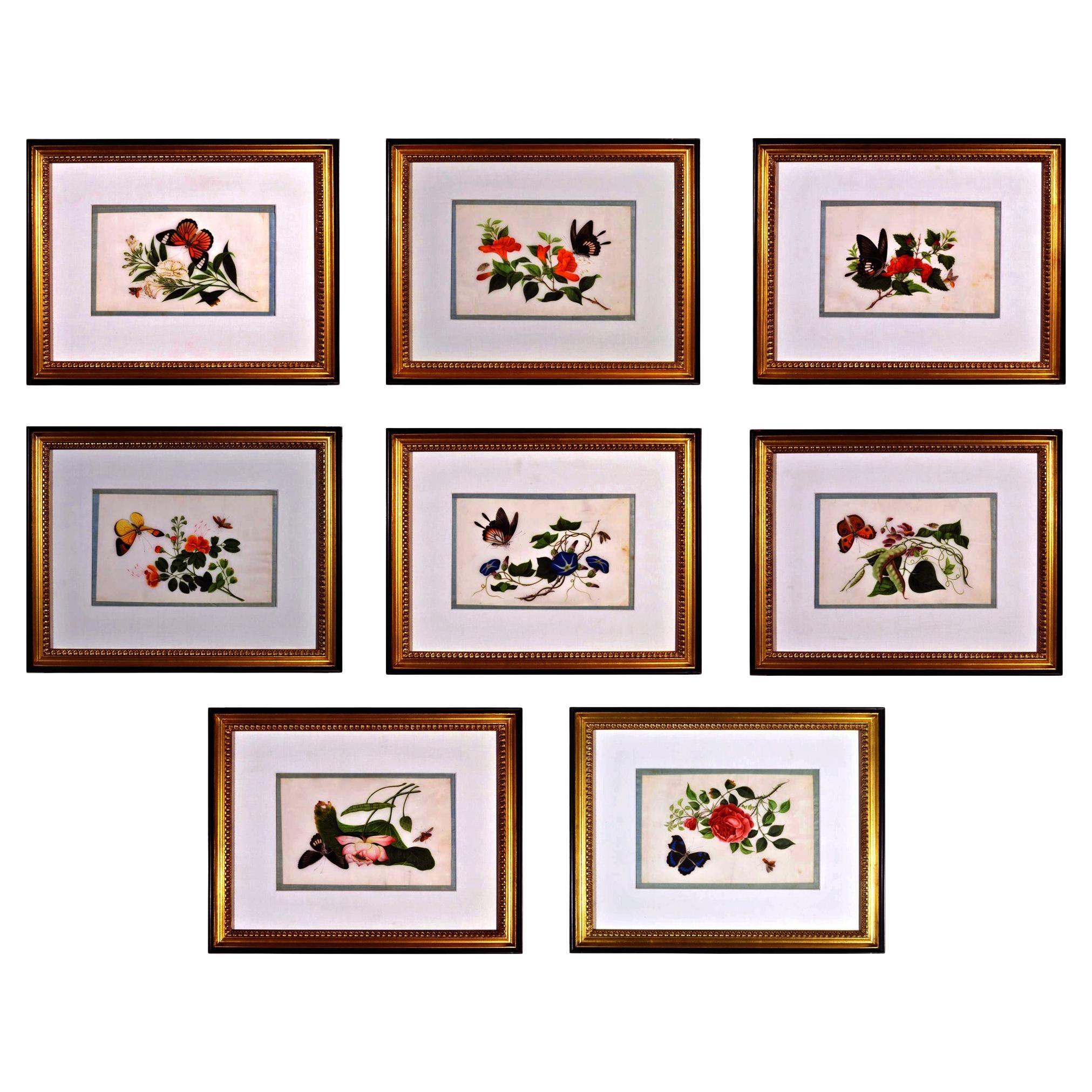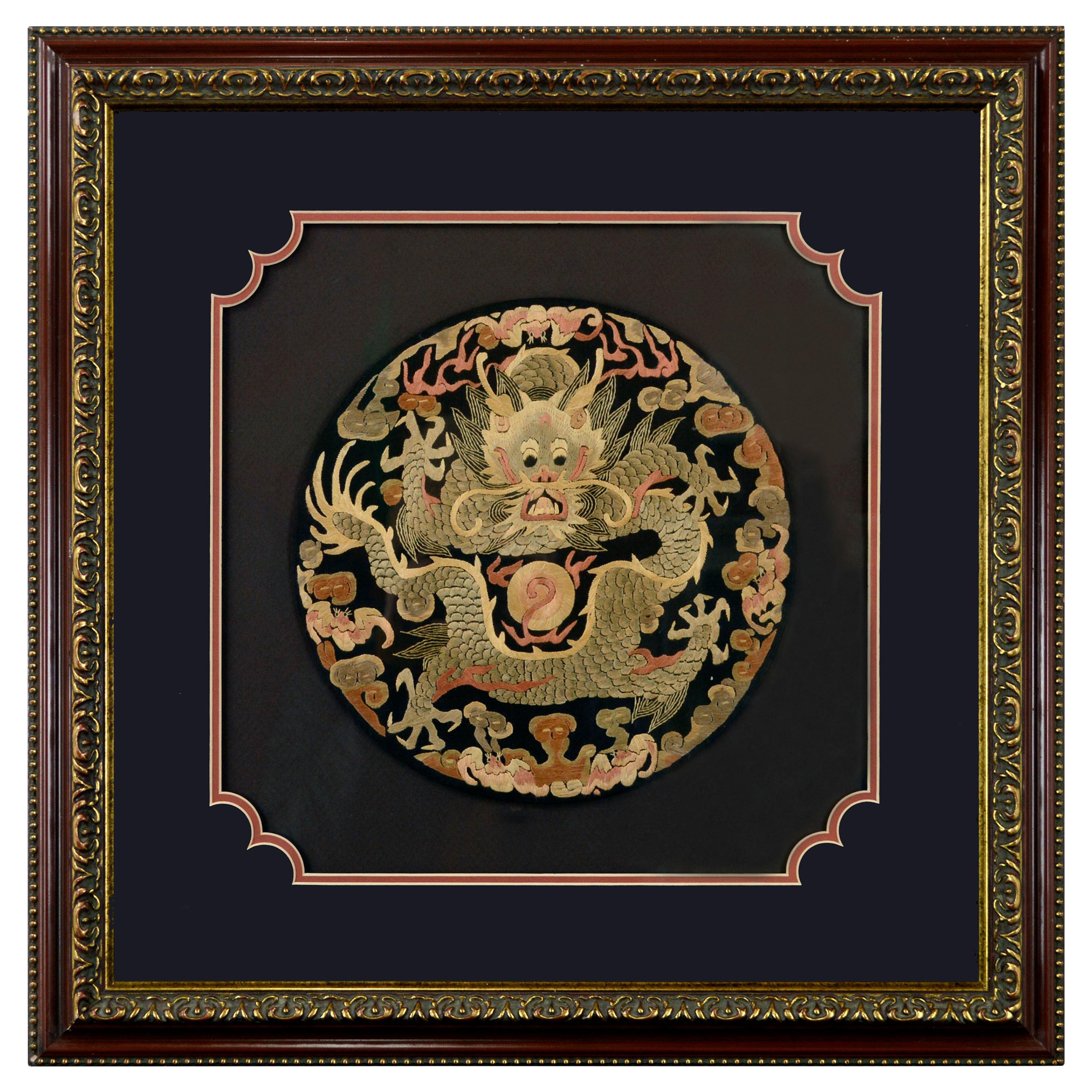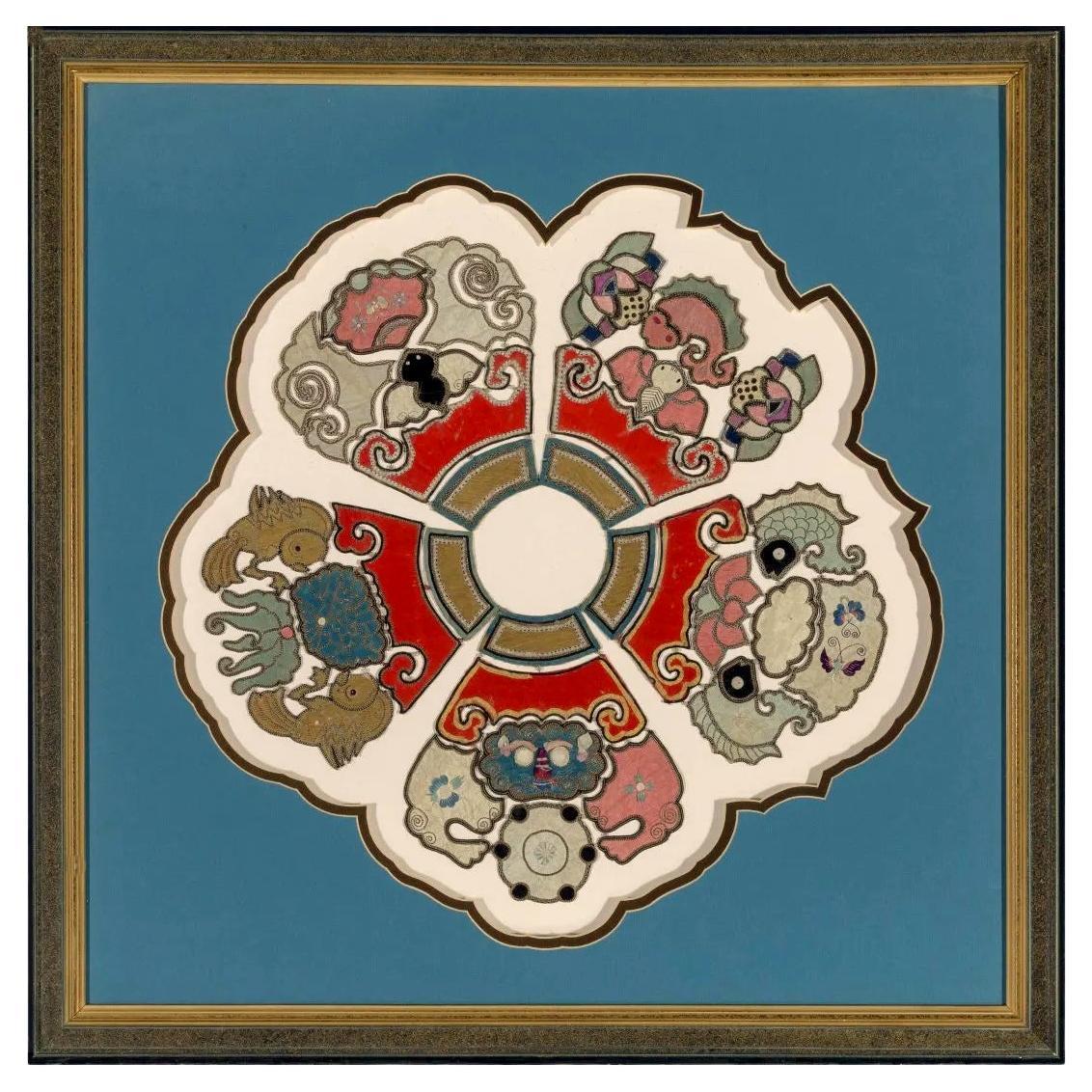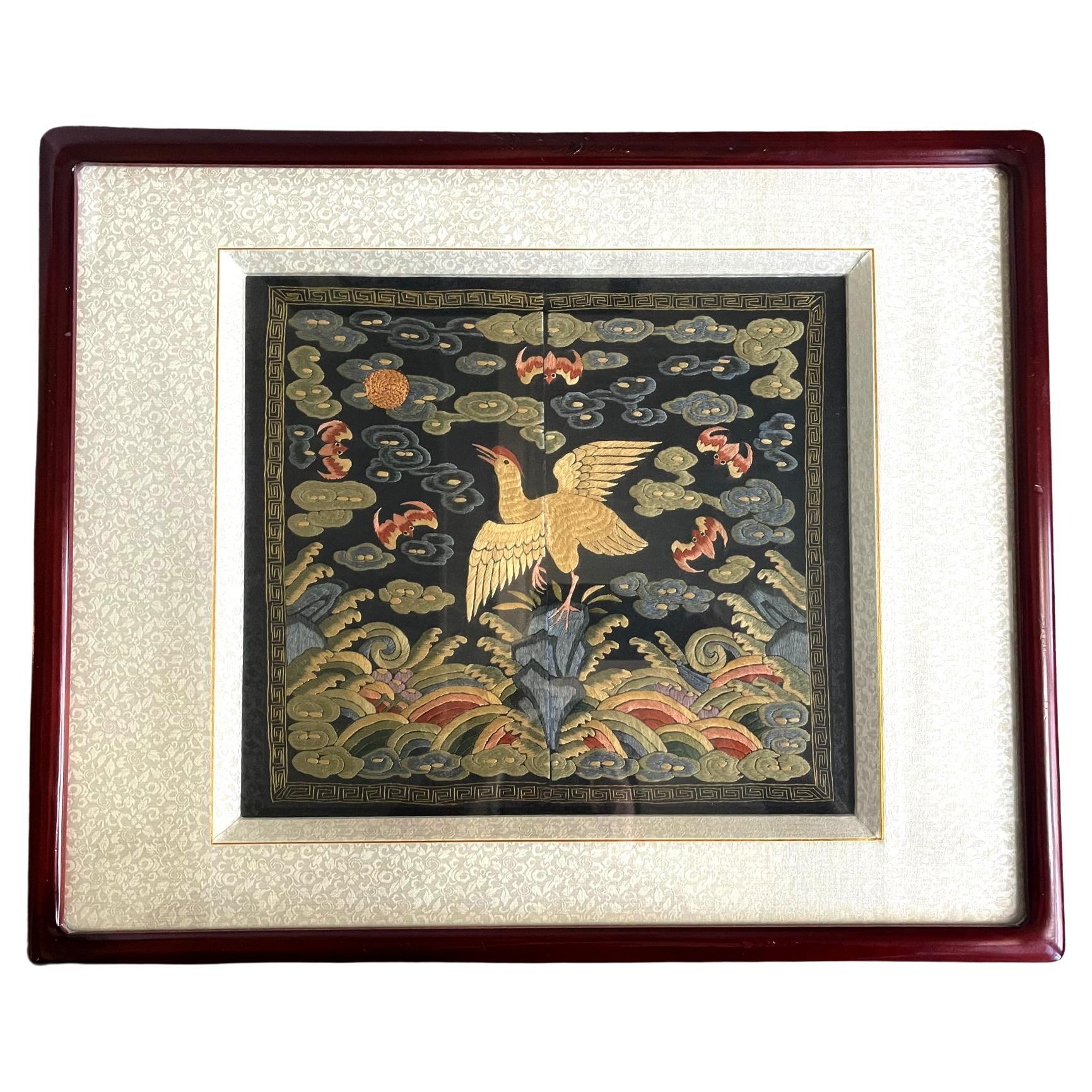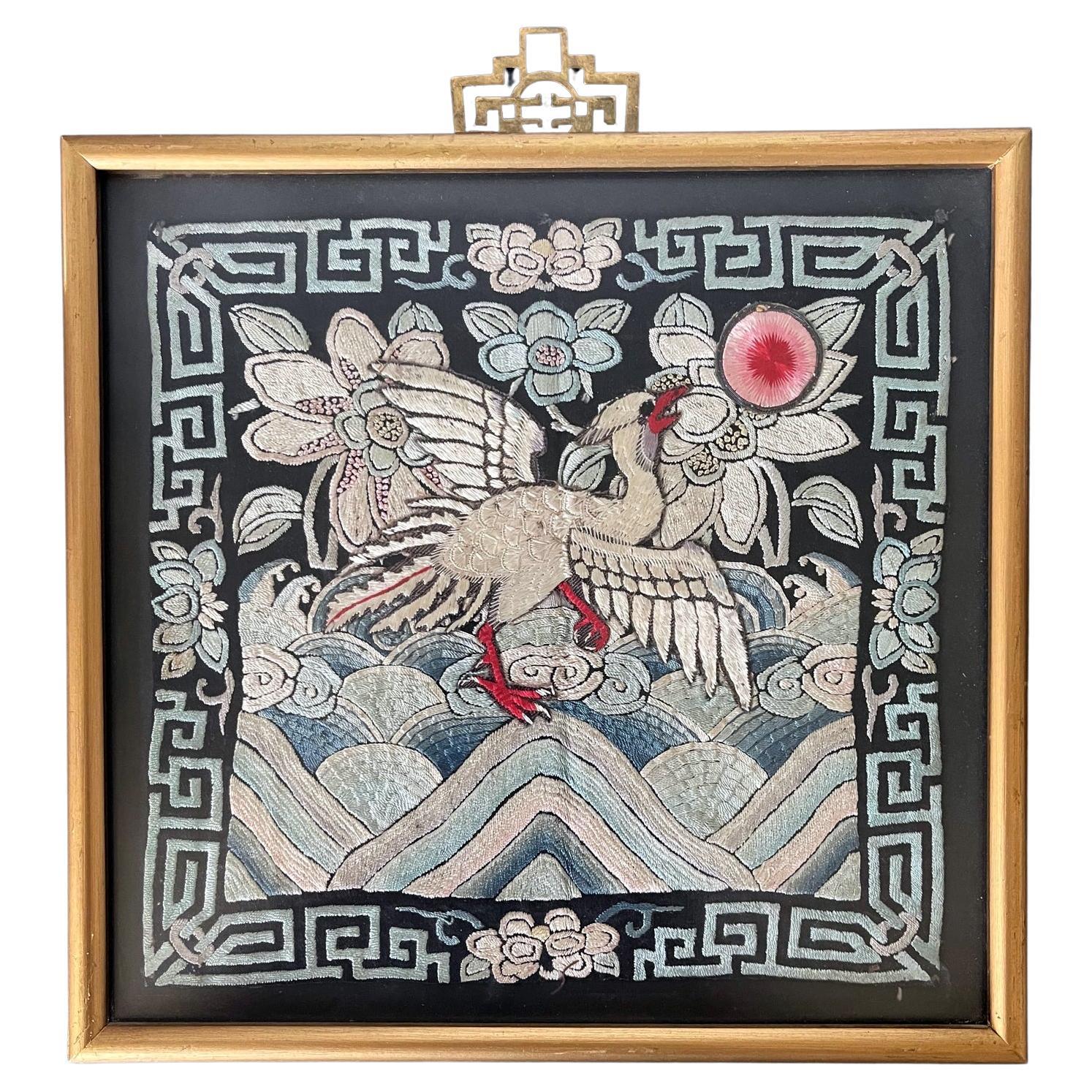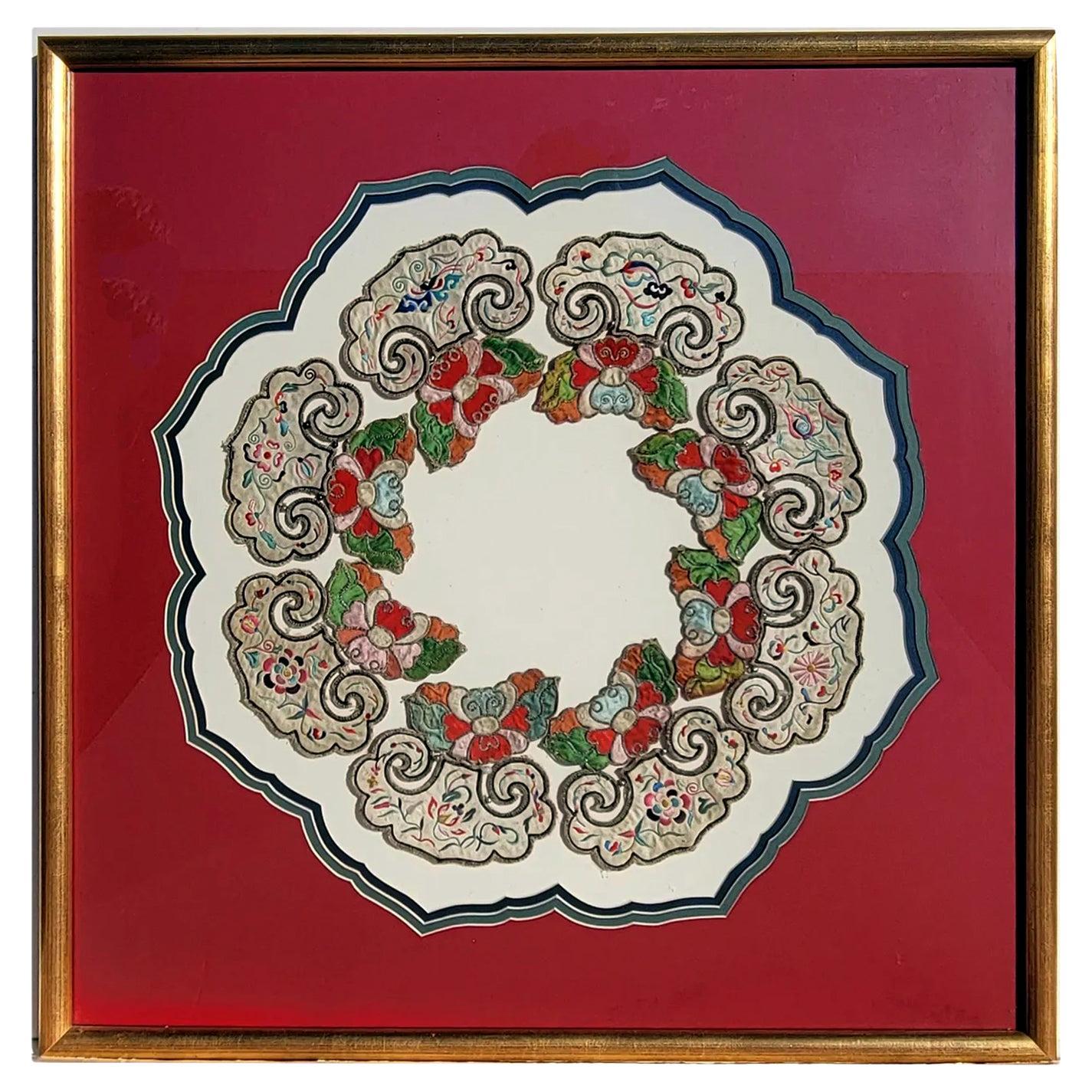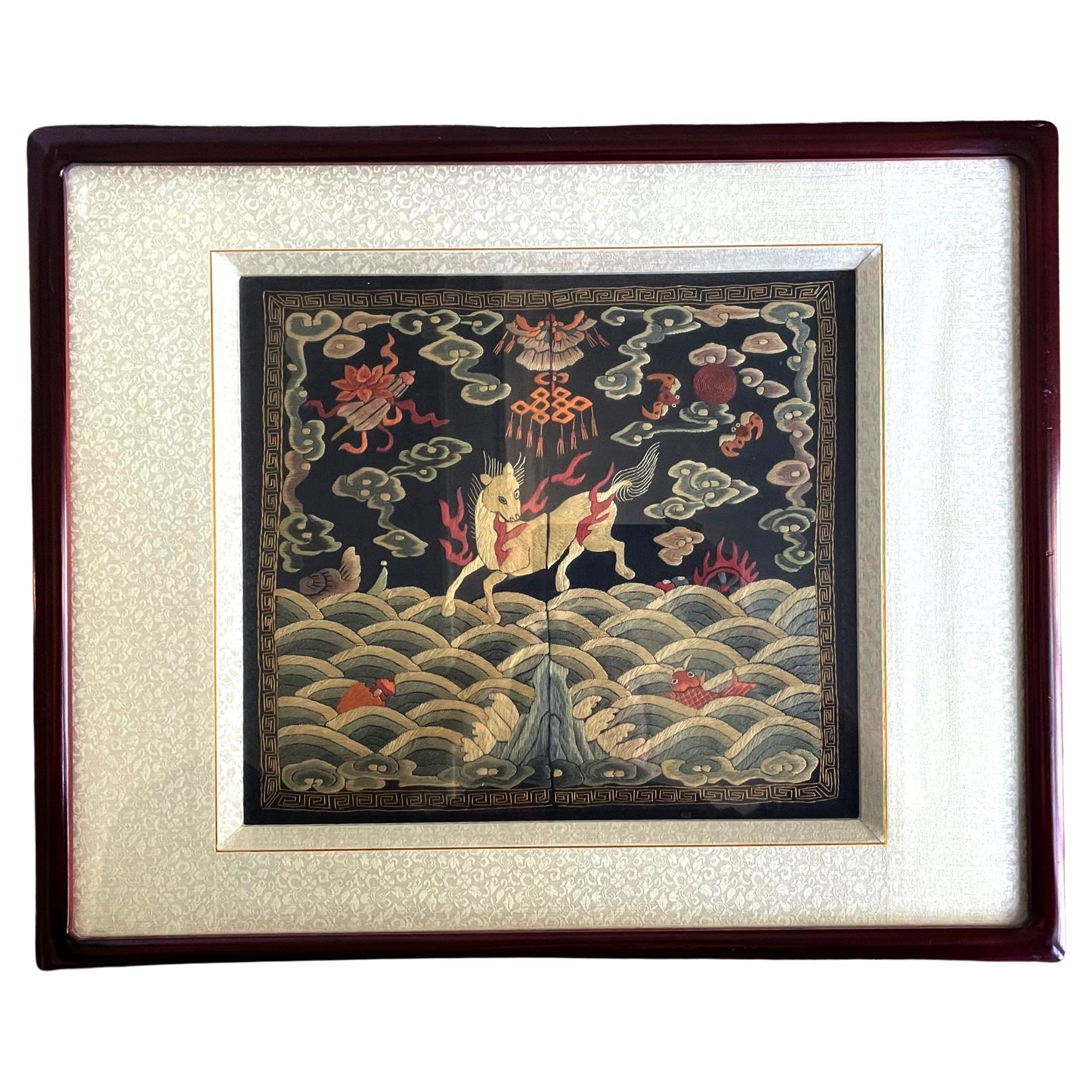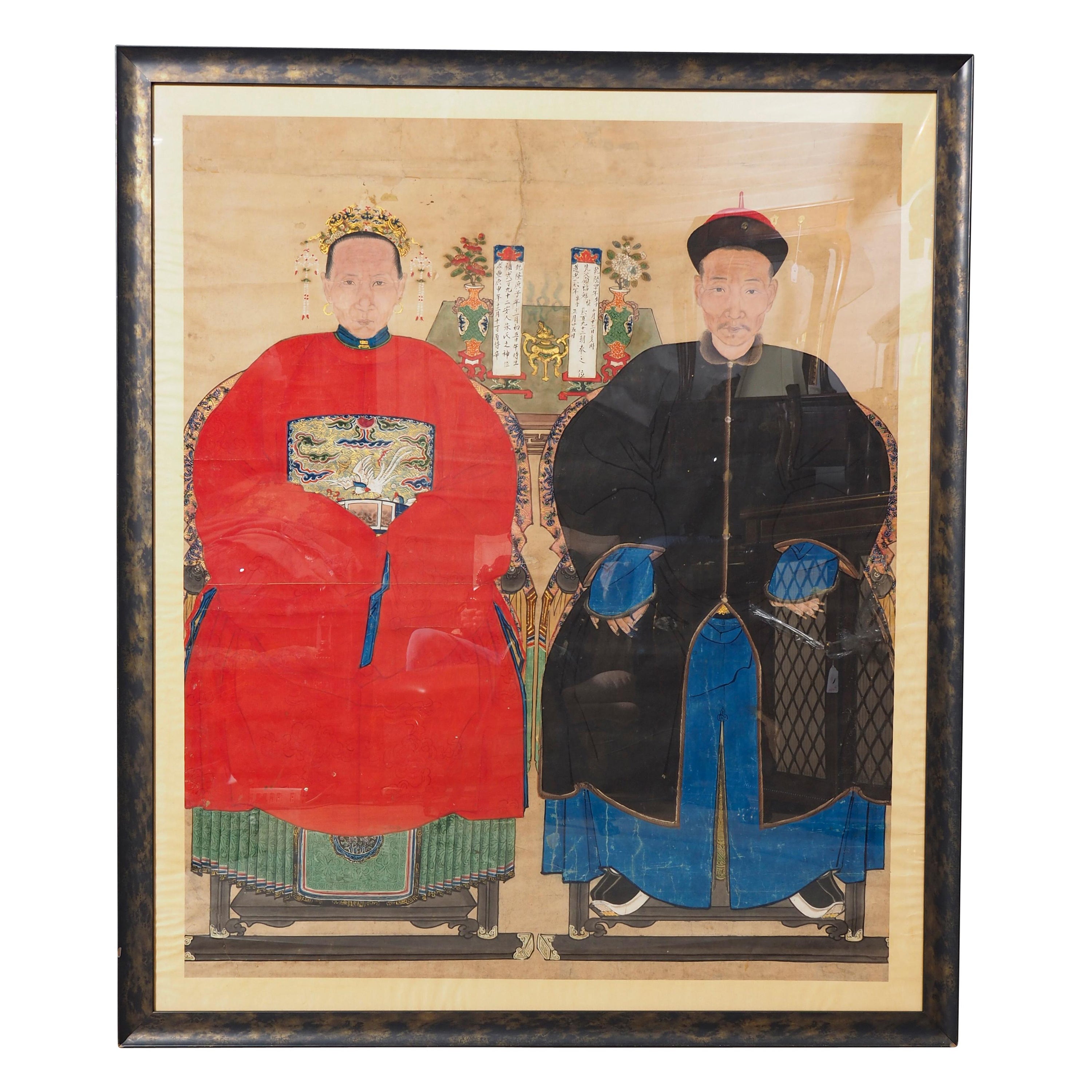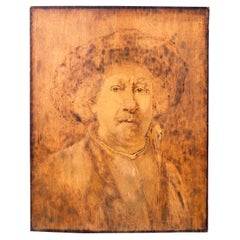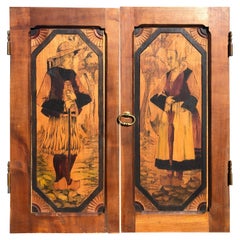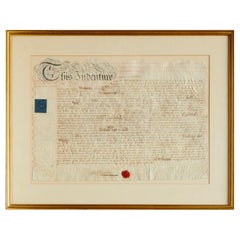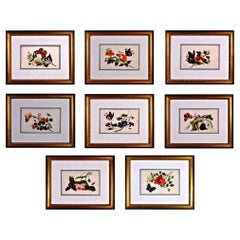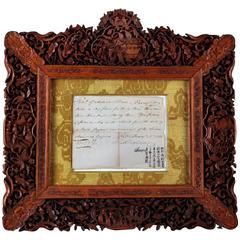
China Trade Canton 1811 Framed Autograph HOUQUA 伍秉鉴; Wu Bingjian,
View Similar Items
Want more images or videos?
Request additional images or videos from the seller
1 of 11
China Trade Canton 1811 Framed Autograph HOUQUA 伍秉鉴; Wu Bingjian,
About the Item
- Dimensions:Height: 18 in (45.72 cm)Width: 19.5 in (49.53 cm)Depth: 2 in (5.08 cm)
- Style:Qing (Of the Period)
- Materials and Techniques:
- Place of Origin:
- Period:
- Date of Manufacture:Early 19th Century
- Condition:Wear consistent with age and use.
- Seller Location:South Burlington, VT
- Reference Number:1stDibs: LU128924845483
About the Seller
5.0
Platinum Seller
These expertly vetted sellers are 1stDibs' most experienced sellers and are rated highest by our customers.
Established in 1990
1stDibs seller since 2015
2,210 sales on 1stDibs
Typical response time: 1 hour
More From This SellerView All
- American Antique Painting After Rembrandt by Norman Kingsley, 1899Located in South Burlington, VTFrom a New England collection and a unique find An all original work of art signed on lower back NWC, 1899. This is a beautiful hand incised image "After Rembrandt" hand created by Norman Kingsley and dated 1899 on reverse. It is all hand incised and hand stained. It details a subject image after Rembrandt which Kingsley specialized. Dimensions: 21.5" high and is 17.75 inches wide. Handmade, hand stained and hand burned using pyrographic techniques Provenance: New England collection. About Norman Kingsley (1829-1913). He was a prominent dentist in New Jersey and his body of artisan work includes some 10-15 different hand incised portraits. These include images of original Rembrandt...Category
Antique 19th Century French Arts and Crafts Decorative Art
MaterialsWood, Pine
- France Antique "Brittany" Paul Fouillen Arts Crafts Pyrography PanelsLocated in South Burlington, VTFrom an old New England collection of fine Arts & Crafts furnishings. Two large all original unique works of art, circa 1920 This is a beautiful set of two (2) hand incised and...Category
Early 20th Century French Arts and Crafts Decorative Art
MaterialsBrass
- English Shakespearean Handcrafted "Four Seasons" Arts & Crafts Panel Set FourLocated in South Burlington, VTFrom an important thirty year old New England collection of Arts & Crafts furnishings. Four unique works of art, circa 1890. This is a bea...Category
Antique 1890s English Arts and Crafts Decorative Art
MaterialsWood, Pine
- Shakespeare’s Sir John Falstaff Examining Recruits 1866, Signed Ball HughesLocated in South Burlington, VTFrom an important thirty year old New England collection of American Folk Art Pyrography Robert Ball Hughes (British-American, 1804-1868) This original period framed 1866 pyrography on wood panel was created after the painting by Sir John Gilbert (English, 1817-1897) with detailed description and dedication written on the back of the panel using the same technique. A photographed rubbing of the reverse dedication will be included and is part of this description (photo). Frame: 20 inches high and 28.5 inches wide; Site: 13.25 inches high and 22 inches wide This painting depicts the episode from Shakespeare’s Henry VI Part II Act III Scene V in which Sir John Falstaff inspects the recruits mustered by Justice Robert Shallow and his cousin Silence. Falstaff sits in a chair surrounded by his cronies whilst Bardolph leads Bullcalf forward. Hayman’s treatments of Falstaff reviewing recruits are perhaps among the most successful depictions of a theatrical scene in British painting. The tableau vibrates with the energy that he brought to his Vauxhall supper box scenes of games and dancing, and is filled with the humour and observation of his portraiture. Every figure is in motion and proclaims its own individuality. About Robert Ball Hughes (British-American, 1804-1868) Known as Ball Hughes and also using that as a signature, this man was a sculptor and wax-portrait artist. He was born in London, England, and died in Dorchester, Massachusetts. He studied and exhibited at the Royal Academy in London as well as at the Pennsylvania Academy of the Fine Arts and the National Academy of Design in New York City. He emigrated to New York in 1829, having earned much prestige in England. In New York, he received many commissions for portrait busts in bronze and wax. Among his subjects were John Trumbull, Alexander Hamilton, and Washington Irving. From 1838 to 1840, he worked in Philadelphia and from 1840, worked in Boston. In his final years, he began to produce pyrographic wood pictures (pyro engravings or "poker pictures"), including The Witches of MacBeth (c. 1840), Babylonian Lions (1856), Don Quixote in His Study (1863), The Trumpeter (1864), General Grant...Category
Antique 19th Century American Victorian Decorative Art
MaterialsWood, Pine
- France Art Deco Beautiful Women Four Seasons Panel Set Four 1930Located in South Burlington, VTFrom an important thirty year old New England collection of Arts & Crafts furnishings. Four unique Four Seasons works of art, circa 1930. This is a beautiful French art deco period set of four (4) hand incised hard wood panels depicting beautiful women...Category
Vintage 1920s French Art Deco Decorative Art
MaterialsWood, Pine
- China Antique Qing Monumental Buddhist Stone PagodaLocated in South Burlington, VTChina antique monumental Pagoda Shrine with carved Lohans, 115" high, red sandstone, eight sections, Qing dynasty (1644-1911) This stone pagoda is a monumental work of art seldom seen in the west. Pagodas evolved from Indian stupas which were originally designed to hold the Buddha’s relics and textual paper sutras. This tiered tower composition became popular all over Asia and its architectural form differed from region to region. In China, its origins date to Buddhist missionaries who traveled the Silk Road. Early examples were built in temples but by the 13th century they were found outside the temple complex. Oldest examples had simple round or square bases and then later octagonal or more stylistic forms like the “censer” type of base on this pagoda. The 18 Arhats (lohans) portray Buddha’s messengers and each Lohan cylindrical tier is unique. This tour de force could serve as the centerpiece in the finest indoor space, or private or public Chinese or Asian inspired garden or Buddhist art collection. Photographs taken in natural light. Provenance: Private New England Collection acquired in 2005 in China from private collection Cheng Du, Sichuan Province. About Pagodas: Chinese pagoda towers...Category
Antique 19th Century Chinese Qing Sculptures and Carvings
MaterialsSandstone
You May Also Like
- Framed Antique Vellum Land Indenture, 1811, LondonLocated in Morristown, NJVellum land indenture, 1811, London. Parties mentioned include Richard Phillip Higham, Henry Parry, and John Alliston. The document contains two seals. The blue seal is likely a scrivener's seal. Scriveners were granted authority to draft contracts, wills, and documents similar to deeds that conveyed assets from one party to another. The red wax seal...Category
Antique 1810s British Georgian Decorative Art
MaterialsAnimal Skin, Glass, Wood
- China Trade Framed Pith Paper Set of Pictures of Butterflies and PlantsLocated in Downingtown, PAChinese Watercolours of Flowers and Butterflies on Pith Paper, Set of Eight, Circa 1840-60. The superb set of Chinese watercolours of flowers and insects are painted on pith paper a...Category
Antique Mid-19th Century Chinese Chinese Export Decorative Art
MaterialsPaper
- Chinese Dragon, Framed Silk Textile Surcoat EmbroideryLocated in Soquel, CALate 19th century Chinese silk embroidery rank badge textile, with a finely detailed dragon along with other various symbols embro...Category
Antique 1890s Chinese Qing Textiles
MaterialsSilk
$2,120 Sale Price20% Off - Framed Chinese Embroidered Silk Collar Qing DynastyLocated in Atlanta, GAAn embroidered silk collar from China dated to late Qing Dynasty circa 19th century. Known as Yunjian (Cloud Shoulder or Cloud Collar), this multi-lobed t...Category
Antique Early 19th Century Chinese Qing Textiles
MaterialsSilk
- Framed Chinese Embroidered Silk Collar Qing DynastyLocated in Atlanta, GAA silk collar from China dated to late Qing Dynasty circa 19th century. Known as Yunjian (Cloud Shoulder or Cloud Collar), this multi-lobed textile piece was a detachable collar worn around the shoulders as part of the traditional Chinese garment accessory. With its origin dated back to the Han Dynasty and being used until the end of Qing Dynasty, the form evolves with time, but much of the ornamentation and fundamental symbolism remains the same. This striking example features a two-tiered design with seven lobes on each circle, all of which are variations of the shape of auspicious "ruyi", which represents the head of Lingzhi mushroom, a symbol of longevity. The inner lobes feature elaborate embroidery floral design with long and short satin stitches. Notably, one panel has a double gourd design, the symbol of fortune. The outer lobes show a simpler but bolder vision with the outlines of the designs lineated with metallic threads buddled in chain stitches. Small jade beads were used to link the piece together and most of them still remain. The piece as a whole has a very pleasant lilac purple color, delicate with the jade beads. In Qing Dynasty, the silk collar with high quality was worn by noble or aristocratic women. The red color and the lotus boy symbol indicate that it was most likely part of the fashion accouterment worn during wedding ceremony. The collar is beautifully float mounted within a double conforming mat in a giltwood frame and wood backing. A stunningly presented period piece with story to tell. Reference: For a collection of Chinese embroidered collars...Category
Antique Early 19th Century Chinese Qing Textiles
MaterialsSilk
- Framed Chinese Embroidered Silk Collar Qing DynastyLocated in Atlanta, GAAn embroidered silk collar from China dated to late Qing Dynasty circa 19th century. Known as Yunjian (Cloud Shoulder or Cloud Collar). This striking example features a two-tiered design with eleven inner and outer lobes radiating in a circular fashion. The red inner lobes feature floral embroidery design in satin stitches, the border with twisted chain stitches. The outer lobes are in the shape of auspicious "ruyi", which represents the head of Lingzhi mushroom, a symbol of longevity. Each showcases fine needlework of butterfly with spread wings and various floral motif. A small ball clasp remains on the front. This textile art is beautifully presented in a giltwood frame floating within a double mat of conforming shape. Detachable collars such as this were worn around the shoulders as part of the traditional Chinese garment...Category
Antique 19th Century Chinese Qing Textiles
MaterialsSilk
Recently Viewed
View AllMore Ways To Browse
19th Century Ships Lantern
Old Canton
Antique Paper Lantern
Antique Paper Lanterns
Large Antique Ship Lantern
Antique Japanese Paper Lantern
Antique China Porcelain Collectibles
Collecting Antique Chinese Porcelain
Chinese Paper Lanterns
19th Century Ship Portrait
Canton China Early 19th Century
Lifetime Furniture Co
Chinese Porcelain Calligraphy
Porcelain Group20 Century
Large Paper Lantern
Antique Maine Sign
19th Century Chinese Merchant
Chinese Portrait Silk
